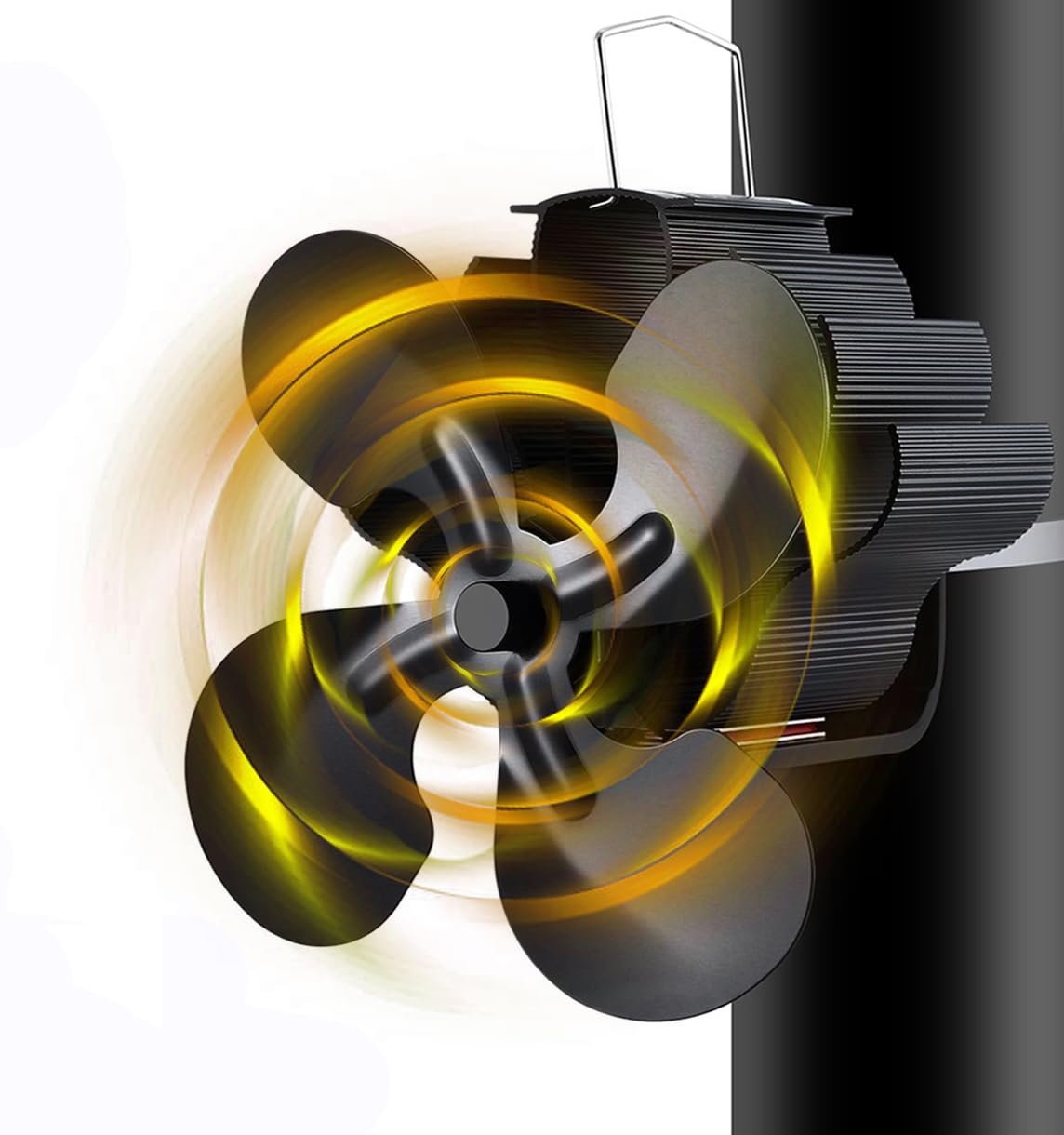Is A Log Burner Eco Friendly? Exploring The Environmental Impact
Today we discuss Is A Log Burner Eco Friendly. In the pursuit of a greener and more environmentally conscious lifestyle, many individuals are turning to alternative heating sources. One popular option is the log burner, which provides warmth and a cozy ambiance. But the pressing question remains: is a log burner eco-friendly?
The answer may surprise you. While the burning of wood does release carbon dioxide into the atmosphere, there are ways to minimize the environmental impact. By adopting sustainable practices and using properly seasoned wood, you can ensure that your log burner remains a more eco-friendly choice. Let’s dive deeper into this topic and explore how you can make your log burner a greener heating solution.
Is a Log Burner Eco-Friendly?
There has been increasing interest in finding eco-friendly alternatives for heating homes, and log burners have gained popularity in recent years. However, the question still remains: Are log burners truly eco-friendly? In this article, we will delve into the various aspects of log burners and their impact on the environment to determine their eco-friendliness.
The Basics of Log Burners
To understand the eco-friendliness of log burners, it’s essential to grasp the basics of how they work. Log burners, also known as wood-burning stoves, are heating appliances designed to burn logs or other biomass materials for heat generation. They consist of a firebox, flue, and chimney, and are often used as a primary or secondary heat source in residential settings.
Efficiency and Emissions
One crucial factor in determining the eco-friendliness of log burners is their efficiency and emissions. When properly designed and operated, log burners can be highly efficient at converting wood fuel into heat energy. Modern log burners often have advanced combustion systems that maximize heat output and minimize emissions.
+ Efficient combustion systems ensure that a higher percentage of the fuel is converted into usable heat, reducing waste and enhancing energy efficiency.
+ Efficient log burners produce lower levels of harmful emissions, such as particulate matter (PM), carbon monoxide (CO), and volatile organic compounds (VOCs).
+ Advanced technologies like catalytic converters and improved air intake systems help reduce emissions further.
It is important to choose a log burner that meets the necessary regulations and standards for emissions, such as those set by the Environmental Protection Agency (EPA) in the United States or the European Eco-Design requirements.
Sustainable Wood Fuel Sources
The source of the wood fuel used in log burners also plays a crucial role in their eco-friendliness. Opting for sustainably sourced wood is essential to ensure minimal impact on forests and ecosystems. Sustainable wood fuel sources include:
+ Certified sustainable forestry operations that replant trees at a rate equal to or greater than the rate of harvest.
+ Waste wood from sustainable timber industries and forest management practices.
+ Plantations specifically established for renewable biomass production.
By using sustainably sourced wood fuel, the environmental impact of log burners can be significantly reduced.
Comparing Log Burners to Other Heating Methods
To fully assess the eco-friendliness of log burners, it is important to compare them to other commonly used heating methods. Let’s consider a few alternatives:
Electric Heating
Electric heating is often considered a cleaner and more environmentally friendly option compared to burning wood. However, the overall eco-friendliness of electric heating depends on factors such as the energy source used to generate electricity. If the electricity is sourced from renewable sources like solar or wind, electric heating can be highly eco-friendly. However, if the energy comes from fossil fuel-based power plants, the environmental impact may be higher compared to burning sustainably sourced wood.
Fossil Fuel Heating
Many homes still rely on fossil fuel-based heating systems, such as oil or gas boilers. These heating methods contribute significantly to greenhouse gas emissions and air pollution. Compared to fossil fuel heating, log burners can be a greener alternative, especially when sustainably sourced wood is used.
Heat Pumps
Heat pumps are energy-efficient systems that extract heat from the air, ground, or water sources for heating purposes. They are considered one of the most environmentally friendly heating options. However, heat pumps may not be suitable for all homes or climates due to installation requirements or extreme weather conditions.
Environmental Considerations:
While log burners can be a relatively eco-friendly heating option when compared to some alternatives, there are still a few environmental considerations to keep in mind:
Air Quality
The combustion process in log burners can release particulate matter and other pollutants into the air. However, using properly seasoned wood, operating an efficient log burner, and adhering to maintenance practices can minimize emissions and maintain good air quality.
Carbon Neutrality
Burning wood releases carbon dioxide (CO2) into the atmosphere, contributing to greenhouse gas emissions. However, sustainable forestry practices can ensure a balanced carbon cycle. Trees absorb CO2 as they grow, offsetting the emissions produced when wood is burned. When managed responsibly, the use of sustainably sourced wood fuel in log burners can be considered carbon-neutral.
Are wood-burning stoves eco-friendly?
Frequently Asked Questions
Is a log burner eco-friendly?
Yes, log burners can be considered eco-friendly when used properly. Here are some factors to consider:
What makes a log burner eco-friendly?
An eco-friendly log burner is one that efficiently burns wood, resulting in minimal emissions and air pollution. It should also be certified as meeting the required emissions standards.
Does using a log burner contribute to air pollution?
If a log burner is not used properly or if low-quality or wet wood is burned, it can contribute to air pollution. However, by using dry, seasoned wood and following best practices for burning, you can minimize pollution.
Are there any regulations or standards for log burners?
Yes, some countries have regulations and emission standards that log burners must meet. These standards aim to ensure that log burners are efficient and environmentally friendly.
What are the benefits of using a log burner?
Using a log burner can provide several benefits, including reducing reliance on fossil fuels, as wood is considered a renewable source of energy. It can also create a cozy and warm atmosphere in your home during colder months.
How can I maximize the eco-friendliness of my log burner?
To maximize the eco-friendliness of your log burner, use only dry, seasoned wood for fuel. Avoid burning treated or painted wood, as it can release harmful chemicals. Regular maintenance and cleaning of your log burner also ensure optimal efficiency.
Can I use a log burner in urban areas?
Whether you can use a log burner in urban areas depends on local regulations. Some cities have restrictions on wood-burning appliances due to air quality concerns. It’s important to check with local authorities to determine if log burners are permitted in your area.
Final Thoughts
In conclusion, while log burners can provide a cozy and appealing heat source, their eco-friendliness is debatable. Although burning wood is considered a renewable energy source, the emissions produced during combustion contribute to air pollution and can have negative effects on both local and global environments. Furthermore, the sourcing and transportation of firewood can also have environmental impacts. Therefore, it is crucial to use log burners responsibly, employing efficient burning techniques and ensuring sustainable sourcing. Ultimately, the eco-friendliness of a log burner depends on various factors, and individuals should weigh the potential environmental consequences before choosing this heating option.




